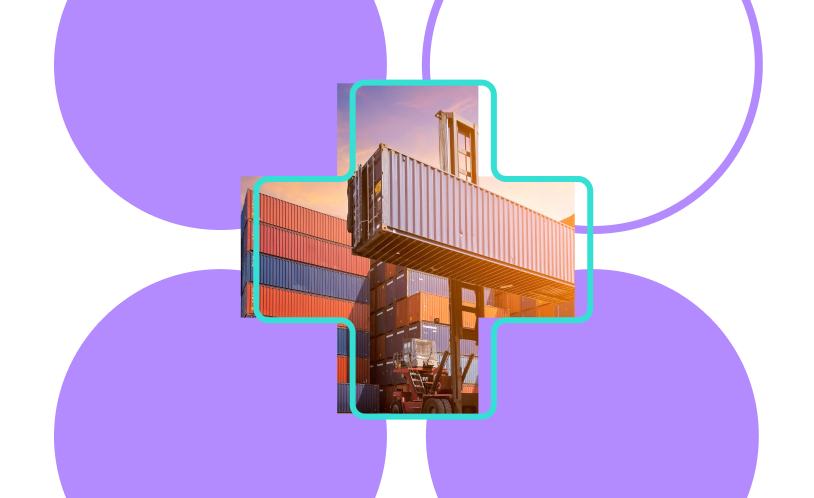As logistics and trucking experts will tell you, the trucking and domestic freight market is unstable. Even among carriers providing service on the same lanes, truck rates can fluctuate uncontrollably. Seriously.
It can get more complicated. The less straightforward a carrier is, the more you could wind up paying, due to a host of hidden charges regularly being covered in the fine print.
These concealed extra charges drive up your shipping costs, but they also directly affect your clients if your goods are delayed. In other words, having current and real market information, including benchmarked freight rates, as well as the ability to find a trustworthy trucking company that won’t overcharge and underserve you becomes kind of a big deal.
Compare Trucking Rates in Seconds
Let’s unpack what you need to know about trucking rates.
Why Trucking Rates Are Important
Like Pokemon cards or Michael Jordan rookie cards, it’s all about supply and demand.
Given that new changes are happening every day, regardless of whether it be an unexpected interference, snowstorms, changes in slated programs, Superbowl traffic, or delays in general, the responsibility falls on trucking companies to ensure that delivery – long haul or local – happens on time. And, like everything, that it happens at the right price.
How To Calculate Trucking Rates
Shipping domestic goods without thinking about the additional costs is like driving with your eyes shut. If you don’t have adequate knowledge of key factors – distance your shipping, size of goods, urgency, temperature sensitivity, and classification (more on that soon), you’ll end up comparing apples and oranges on your per-mile trucking rate.
You can also calculate trucking rates with this trucking rate calculator:
How To Figure Truck Freight Rates
There are a few factors that impact trucking rates for shipments, and it’s essential to know how they work to be the most informed customer. This is particularly important when you know that the average trucking company has somewhere between 1-2 trucks; yes, there are a ton of small businesses, which means for very large pricing variance.
The Weight of the Shipment
One of the key components that impact the cost estimate of any shipments is the freight weight. The more a shipment weighs, the lower the charge per hundred dollars (but the higher total cost, of course). As the shipment’s weight goes up and moves toward the minimum load weight of the next weight category, the shipment will be rated in the next category as having a low weight for that category.
Shipment Density
Another factor used in determining trucking rates is the density or thickness of the shipment. The density of shipment is usually calculated accurately describes the goods being shipped in the Bill of Lading. The density of any trucking shipment can be calculated by dividing the goods’ weight by its total cubic feet. For palletized shipments, the dimension the good fits on is used in addition to the weight of the shipment to calculate the shipment’s density.
Freight Classification
This is probably the trickiest category. Each trucking shipment has a specific classification that impacts the general trucking rate. In the United States, the National Motor Traffic Association records these classifications for less-than-truckload (LTL) and full-truckload (FTL) freight in the National Motor Freight Classification (NMFC) book. The NMFTA has built up 18 individual classes extending from 50 to 500. Freight class is determined mainly by value, handling, stow-ability, product density, and liability.
Distance of Travel
Regularly, the more the distance to be covered, during transportation, the higher the cost of shipping will be. Gas, right?
Base Rates and Minimums When Dealing With Trucking Shipping Companies
All trucking carriers have established base rates for shipments. Although most rates are cited per $100 dollars, they vary based on carrier and transporting lane. Remember that carriers will change their base rates if they require extra volume.
Knowing the Basic Terms
Beyond pricing, you’ll also need to make sure you know the lingo when dealing with shipping trucking companies and carriers. Here are some of the most common terms that you’ll come across when calculating truck freightquotes.
- Consignor: An individual or trucking shipping company that sends the freight to the consignee.
- Consignee: An individual or trucking shipping company who gets the freight from the consignor.
- Carrier: A firm that offers shipping services.
- Bill of Lading: this can also be referred to as freight bill, B/L or BoL, the freight bill-of-landing is a record of the agreement between the carriers and the shippers for the freight shipping services being offered.
- Loss and Damage: Loss and damage rates only cover freight shipments on transit or in storage for a short period in a facility owned and operated by the carrier.
- Full Truckload (FTL): A shipment that requires the use of a whole truck for shipments.
- Less Than Truckload (LTL): Shipments that don’t need to utilize the full capacity of a truck
- Drayage: This refers specifically to the movement of containers and trailers to and from seaports and railroads through trucking method only
- Pallets (or Skids): stacking platforms that normally measure around 40″ by 48″.
- SKU: Stock Keeping Unit, a detailed report of a different kind, size, or freight.
- CWT: A typical shipping weight unit equivalent to 100 pounds.
Getting A Trucking Freight Quote & Remember Hidden Charges
Most carriers have enormous and complex books sketching out hidden charges and rules that could influence shipping costs. These charges are usually in a book called their Rules Tariff, and there are a couple of factors that can impact these charges. It’s important to get a full trucking freight quote before you proceed with a carrier. If you’re experiencing issues understanding the hidden charges in your shipping fees, it’s best to employ experts to help you calculate charges that may be hidden regularly.
To read more about the freight trucking industry, check out our other blogs, including ‘Things to Know About Partial Truckload Shipping’, ‘The Beginners Guide To Trucking’, & more here!



